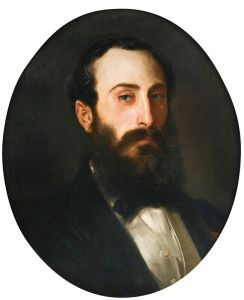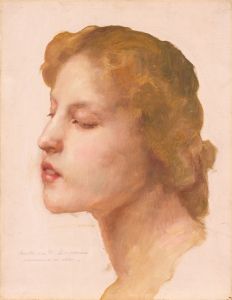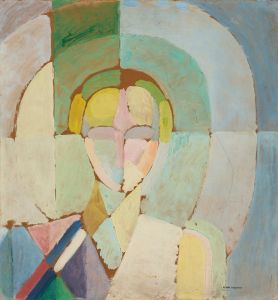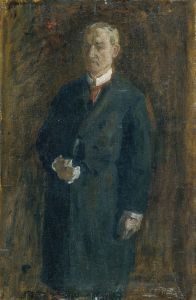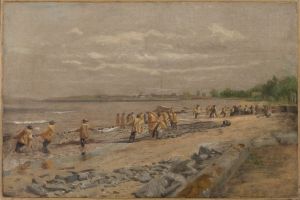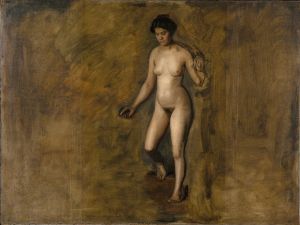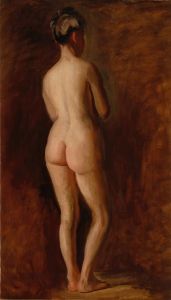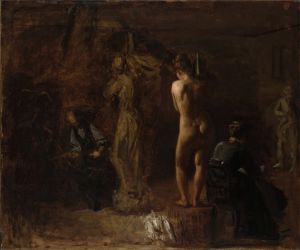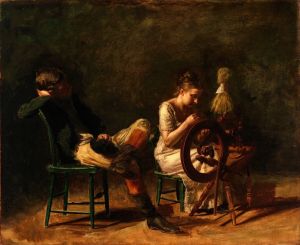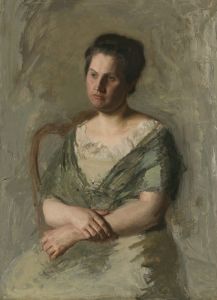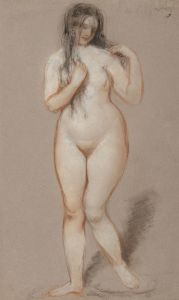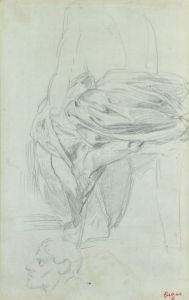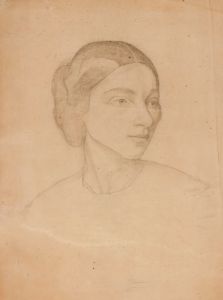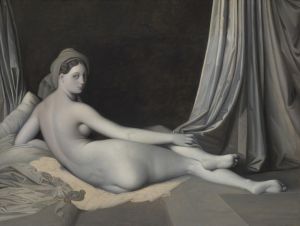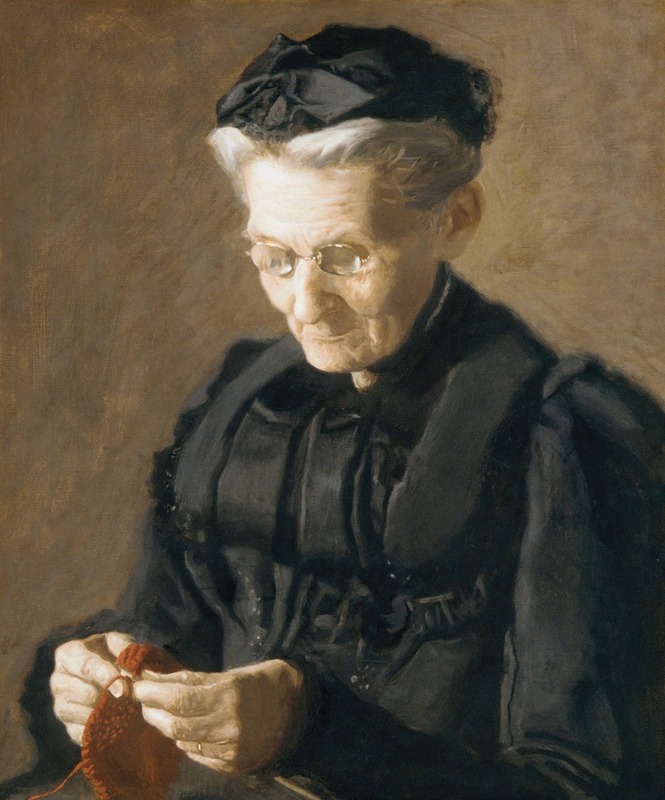
Mrs. Mary Arthur
A hand-painted replica of Thomas Eakins’s masterpiece Mrs. Mary Arthur, meticulously crafted by professional artists to capture the true essence of the original. Each piece is created with museum-quality canvas and rare mineral pigments, carefully painted by experienced artists with delicate brushstrokes and rich, layered colors to perfectly recreate the texture of the original artwork. Unlike machine-printed reproductions, this hand-painted version brings the painting to life, infused with the artist’s emotions and skill in every stroke. Whether for personal collection or home decoration, it instantly elevates the artistic atmosphere of any space.
Thomas Eakins, an influential American realist painter, is renowned for his dedication to depicting the human figure and his commitment to realism. One of his lesser-known works is the portrait titled "Mrs. Mary Arthur." This painting exemplifies Eakins' skill in capturing the essence of his subjects through meticulous attention to detail and a profound understanding of human anatomy.
"Mrs. Mary Arthur" is a portrait that reflects Eakins' characteristic style, which often involved a deep engagement with his subjects. Eakins was known for his ability to convey the personality and inner life of the individuals he painted, and this work is no exception. The painting is a testament to his mastery of portraiture, showcasing his ability to render the textures of skin and fabric with remarkable precision.
Eakins' approach to portraiture was heavily influenced by his academic training and his interest in the sciences, particularly anatomy and physiology. He studied at the Pennsylvania Academy of the Fine Arts and later in Paris under Jean-Léon Gérôme, where he honed his skills in drawing and painting the human form. This background is evident in "Mrs. Mary Arthur," where Eakins' attention to anatomical accuracy is apparent.
The subject of the painting, Mrs. Mary Arthur, is depicted with a sense of dignity and presence. Eakins often chose to portray his subjects in a straightforward manner, avoiding embellishment or idealization. This approach allows the viewer to engage directly with the subject, creating an intimate connection between the painting and its audience. The composition of the portrait is carefully balanced, with Mrs. Arthur positioned in a way that draws attention to her face and expression.
Eakins' use of light and shadow in "Mrs. Mary Arthur" is another notable aspect of the painting. He employed a naturalistic lighting scheme, which enhances the three-dimensionality of the figure and adds depth to the composition. This technique is characteristic of Eakins' work, as he often sought to create a sense of realism that was grounded in the careful observation of his subjects.
Throughout his career, Eakins faced both acclaim and controversy. His commitment to realism and his unconventional methods, such as using photography as a tool for studying movement and anatomy, sometimes put him at odds with more traditional art circles. However, his contributions to American art have been widely recognized, and he is now considered one of the most important American artists of the 19th century.
While "Mrs. Mary Arthur" may not be as widely known as some of Eakins' other works, such as "The Gross Clinic" or "The Agnew Clinic," it remains an important example of his portraiture. The painting reflects Eakins' dedication to capturing the truth of his subjects and his belief in the power of art to convey the complexities of human experience.
In summary, "Mrs. Mary Arthur" by Thomas Eakins is a portrait that exemplifies the artist's skill in realism and his ability to capture the essence of his subjects. Through careful composition, attention to detail, and a naturalistic approach to lighting, Eakins creates a work that invites viewers to engage with the subject on a personal level. This painting is a testament to Eakins' enduring legacy as a master of American portraiture.





